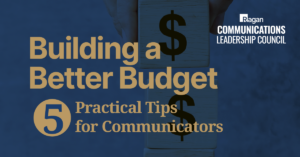Tips for determining the true value of earned media
Generic engagement numbers and readership figures won’t tell the whole story.

Earned media is a great way to build brand awareness, credibility and trust with both prospective and existing customers.
But simply tailoring a pitch to the biggest publication or looking at baseline social data like page views and social media impressions often fails to capture the true value of these third-party placements.
Rather than just focusing on vanity metrics, firms should look to understand “the meat of the story, and did it resonate with those audiences,” according to Noel Christopher, SVP of product development at Edelman.
“It’s all about determining how you’re reaching those key stakeholders – whether it’s an institutional investor, the general public or even an employee who might work for the brand,” Christopher said. “That’s where the real value lies.”
Evaluating trust
The rules about EMV have changed in recent years, according to Joseph Abreu, the 2024 chair of the Public Relations Society of America (PRSA). At one time a mention in the New York Times or another top-tier outlet was the “holy grail” of PR. They’re still very valuable, Abreu said. But today a feature in a top trade publication or a tweet from a celebrity praising a product can sometimes do better for your business.
“We all know what happens when Taylor Swift promotes something on her Instagram,” he said.
A huge part of the value is in the credibility that it builds for your brand. There isn’t necessarily a specific dollar value associated with it. But, when assessing value, it’s important to measure outcomes. Did it raise awareness of the company or its products? Did it build a targeted audience or strengthen market sentiment?
“When you think about earned media, it’s a part of the storytelling process,” Abreu said. “The real value comes when the story that you’re telling and the media that you earned is able to convince the consumer.”

Noel Christopher
To that end, Edelman created a proprietary analytics platform, Trust Stream. It combines various data sources, from legacy survey research to real-time media monitoring. It gauges perceptions of, well, trustworthiness.
The agency uses it to see how a pitch helps drive the conversation about the brand, company or individual, Christopher said. It examines factors to score the trustworthiness of content.
During a CEO change, for example, the Edelman team will use Trust Stream to assess the positive or negative effects of media coverage. They analyze factors like stability, continuity and investor trust or sentiment. This allows them to give the client a clear, data-driven view of the unfolding narrative. It also shows where to focus subsequent efforts to reduce reputational damage, Christopher said.
“We’re not just looking at the number of articles or the size of the audience,” Christopher said. “We want to know: did this coverage build credibility, inspire action, or shift perceptions of the brand?”
Not every PR firm or company will have the tools of a large agency like Edelman. But they can still identify data sets and metrics that are most reliable to them to map the coverage to specific business objectives for each client, whether that’s brand awareness, lead generation, sales or reputation. She mentioned setting up Google Alerts and Talkwater Alerts, a free tool that lets brands track mentions of their brand, competitors or specific keywords across the web, including social media platforms like X.
“Reach and engagement are important, but we really want to understand the true impact stories are having on trust,” Christopher said.
Adding earned media to overall strategy
Abreu said plenty of companies have succeeded with paid ads and influencers. But independent endorsements or news stories usually do a better job of boosting a brand’s reputation because of how they resonate with an audience.
Determining the right metrics to track is just one piece of the puzzle. Brands must have a strong process for finding valuable earned media opportunities. They must craft narratives that will resonate with target audiences.
That’s where the good, old-fashioned PR work comes into play.

Joseph Abreu
Edelman has a “One E(delman)” team approach. It unites stakeholders from across the firm – strategy, creative, media relations and influencer marketing – to help navigate these waters on a brand-by-brand basis.
Each client has different goals for their placements. A tailored strategy checks if the client is in an offensive or defensive position, launching a new product or targeting new demographics.
For example, Christopher said that to reach Boomers or Gen X, a traditional media approach, like landing a segment on the “Today Show,” may work. For younger millennials and Gen Z, the focus should be on influencer partnerships and sponsored content.
“The key is to match the tactics with the audience,” Christopher said.
Once the pitch lands, Christopher suggests an immediate analysis. Then, you’ll want to perform mid- and long-term evaluations, depending on the situation. In some instances, long-term evaluations should involve doing deeper landscape analyses to understand how the story has evolved over time.
“That gives you an annual pulse on how that has changed year over year, and how dramatic that impact has been to the business overall,” Christopher said.
The value happens before you even make the pitch
Proper evaluation should start even before a pitch goes to a magazine, podcast or influencer. The Edelman team digs deep into audience data and the broader media landscape to inform their approach. Using advanced their trust-based large language model, ArchieAI, they’ll create a plan to target specific demographics, interests and behaviors. They believe it will resonate with consumers. This approach helps them find the best journalists and outlets to target for each media opportunity.
By aligning those metrics to business outcomes, firms can show clients the true impact of their earned media efforts. This can help clients make better decisions on where to allocate their resources.
“It’s about crafting narratives that capture the media’s attention,” Christopher said. “They should inspire influencers and let others engage with and amplify your message.”
This level of nuance is critical, especially when presenting earned media results to the C-suite. Christopher said data has become a key differentiator in justifying the firm’s value to clients.
By focusing on metrics that link to business outcomes, brands can prove the impact of their earned media. They can then make better decisions on where to use their resources.
“The numbers are the numbers, and you always want data at the table to help tell your story,” Christopher said.
Metrics that matter for EMV
- Target message to desired audience: Make sure the outlet or influencer selected is the best fit for delivering that message.
- Sentiment analysis: Assess the tone of coverage – whether it’s positive, neutral or negative and how consumers are reacting to the message through social outlets and online comments.
- Message pull-through: Check if key messages or quotes from messaging get included in coverage.
- Perform pre-, post- and long-term analysis: The data will help inform the success of the approach and determine the need for followup messaging.
Casey Weldon is a reporter for PR Daily. Follow him on LinkedIn.







